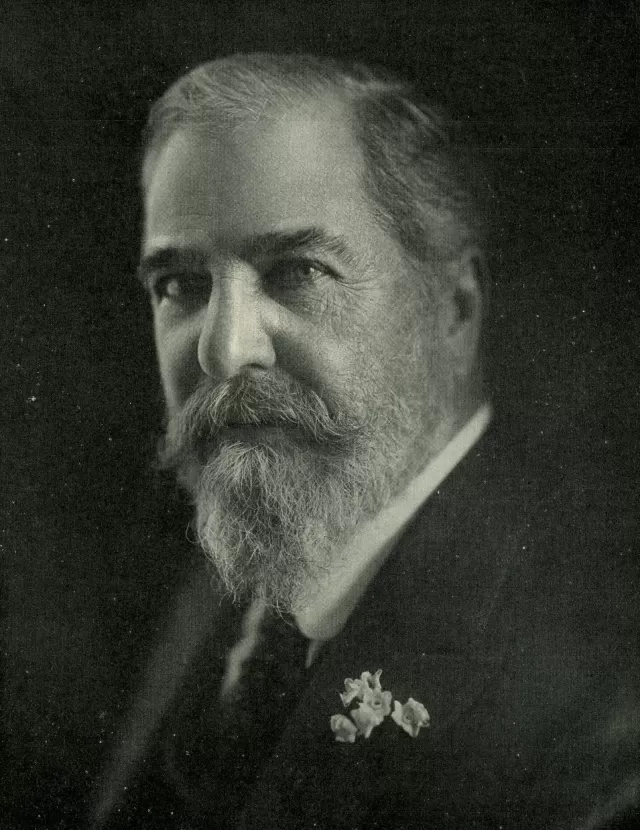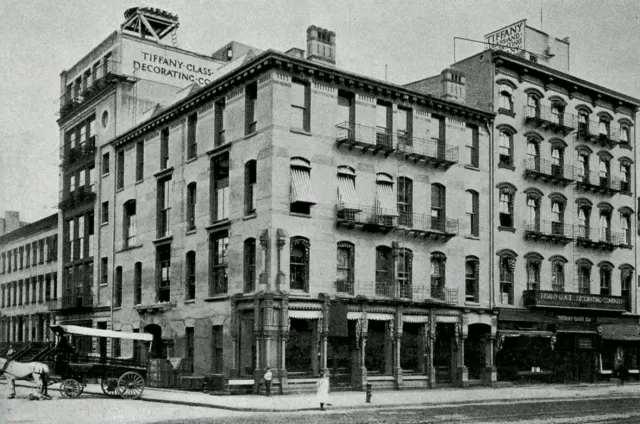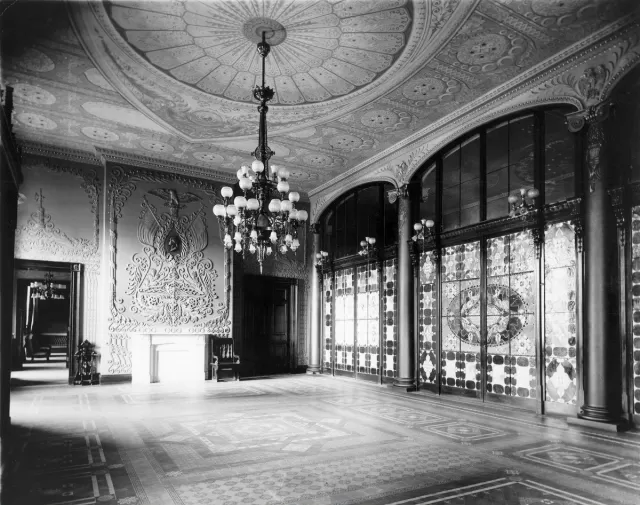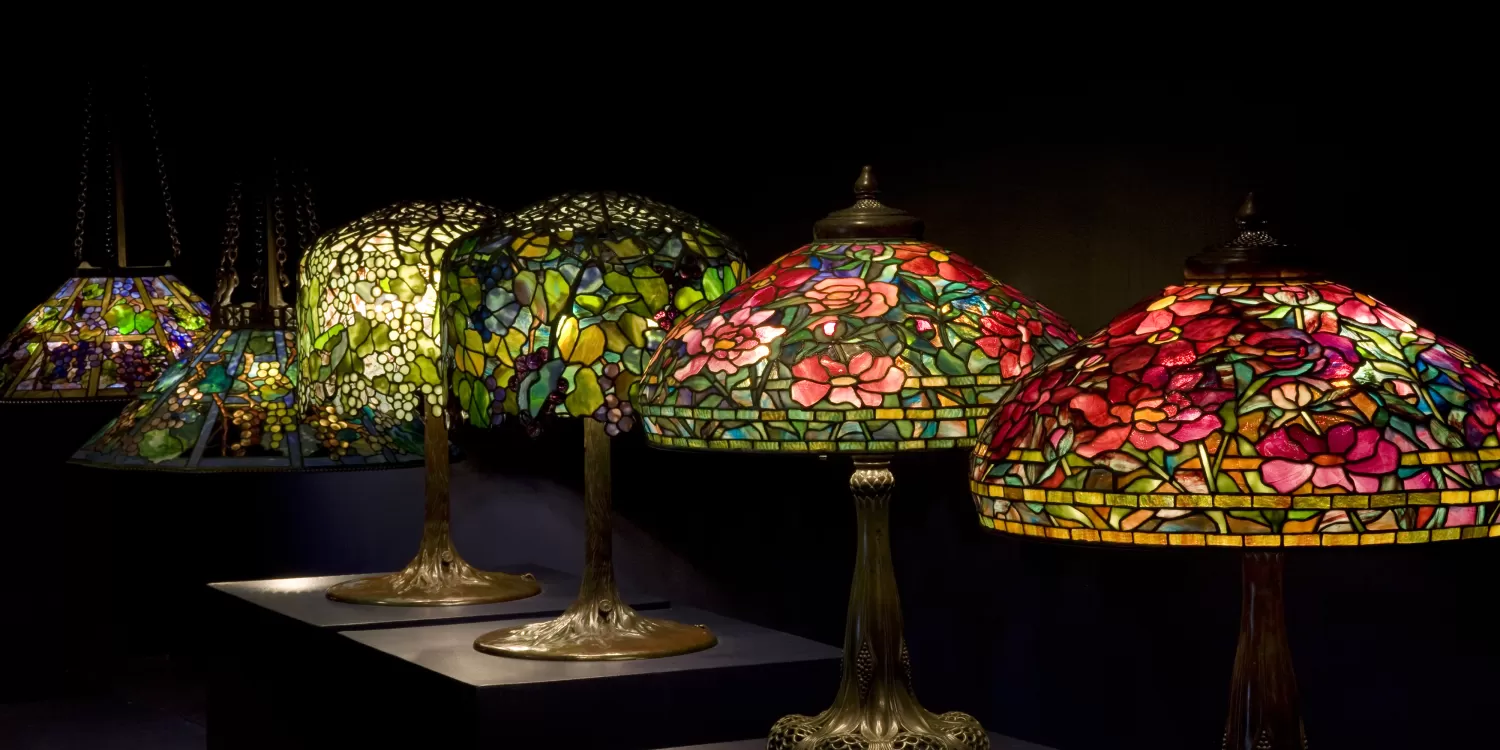Above: Photo by Richard P. Goodbody
Renowned tastemaker of the Gilded Age
Louis C. Tiffany (1848-1933) was one of the leading tastemakers of the Gilded Age. The son of the founder of Tiffany & Company, the luxury retailer renowned for jewelry and silver, Tiffany was exposed to the firm’s highly organized workshops and showrooms filled with the finest decorative objects from around the world. This undoubtedly stimulated his appreciation for fine craftsmanship and innovative design, which became the hallmark of his celebrated Tiffany Studios.
Although Tiffany initially devoted his creative energies to painting landscapes and exotic scenes from his travel abroad, his interests quickly expanded into interior design and the decorative arts. He formed artistic firms in Manhattan and Queens where, under his direction, hundreds of artists and artisans created extraordinary leaded-glass windows, lamps, mosaics, glassware, enamels, ceramics, metalwork, jewelry, furniture and textiles. Many of his clients were wealthy, socially-prominent families seeking unique decorative schemes and objects for their lavish homes. Commissions included the White House during President Chester A. Arthur’s administration, the New York City mansion of sugar magnate Henry O. Havemeyer and the Connecticut home of author Mark Twain. Tiffany also decorated stately public buildings and houses of worship across America.
During his more than fifty-year career, Tiffany exhibited widely and participated in eleven world’s fairs, where he and his firms won an unprecedented number of awards for innovative designs. Tiffany earned widespread critical acclaim and became one of the most celebrated artists of his time.




